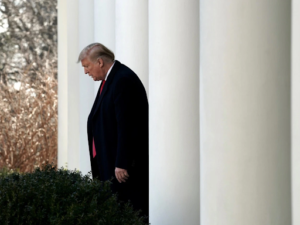On February 3rd, 2020, thousands of Democratic Party members in Iowa took part in a perplexing caucus system in a state that did not represent the demographics of the party, and in a primary process that in 2016, only 28.5 percent of eligible voters took part in. The caucus was a chaotic mess filled with errors and confusing results, and it called into question Iowa’s role as the first state in the nation to vote in the primary process. Caucuses are problematic for many reasons, outlined in another article here. What I argue, however, is that not only is the caucus system bad, but the entire nomination system used by both parties is flawed from the get-go. The reason, believe it or not, is because the parties have too little control over the process.
Many would agree that the goal of primaries should be to pick a candidate that represents the views of the party, can win the general election, and have the governing abilities necessary to be an effective president. The problem with primaries as they currently function is that it is not clear that they fulfill any of these goals. Judging from previous primaries, the evidence is to the contrary.
The modern-day primary system originated in the aftermath of the chaotic 1968 Democratic Convention in Chicago. Then-Vice President Hubert Humphrey was chosen by the Democratic National Committee (DNC) to be the 1968 nominee, despite not winning a single state primary (a process often referred to as “smoke-filled rooms”). Humphrey would eventually lose to Richard Nixon, paving the way for a commission led by South Dakota Senator George McGovern to reform the Democratic primary process. Ironically, while the new system allowed McGovern to later win the nomination in 1972, he would lose to Nixon in one of the largest Electoral College landslides in history.
In the 1976 primary, Jimmy Carter was able to rise from obscurity to win the nomination and presidency. He was able to do this by running as an outsider to Washington politics (a plus in the post-Watergate era) and campaigning extensively and winning in the one state that just happened to be first in the primary: Iowa. Thus, all presidential campaigns from there on out chose to wage an Iowa-focused strategy as a way to propel themselves to the national stage.
Despite having a legislative majority, Carter ran into issues with his own party when it came to healthcare reform, specifically with Massachusetts Senator Ted Kennedy. His outsider status may have won him the primary and the general election, but it made it more difficult for him to navigate the complexities of lawmaking and negotiation in Congress. Carter would later face a primary challenge by Kennedy that would weaken him and help contribute to his loss to Ronald Reagan in 1980. Another outsider, President Bill Clinton of Arkansas would face the same problem getting healthcare reform passed.
Throughout the history of the modern primary process, the party officials would try to maintain some type of influence in the process. After Carter’s 1980 loss, the DNC came up with the controversial superdelegates — delegates chosen by the party who were free to vote for any of the candidates. For both parties, the so-called “invisible primary” existed. This was a process where various would-be candidates try to gain favor amongst party officials and party fundraisers and gain their potential support for a presidential run. The parties would use this as an opportunity to influence the primary in a way such that their preferred candidates would still be nominated. This is referred to as “The Party Decides” view of primaries named after the book that described this process. 2000 Democratic and Republican nominees Al Gore and George Bush were seen as prime examples of this.
Things started to change in 2004 with the increase of outside donations made possible by the Internet. The insurgent campaign of 2004’s Howard Dean took advantage of this and was able to fund a grassroots campaign that was also very critical of the party establishment. While Dean would lose the nomination, his campaign’s Internet strategy would be a blueprint for Barack Obama’s successful 2008 run and Vermont Senator Bernie Sanders’ galvanising 2016 run. It would also mark the weakening of the parties in their own primary process.
Throughout the 2000s, you start to see more and more candidates running as “outsiders” and against the “establishment.” It is not a coincidence that this coincides with the increasing role of outside donations and self-funded campaigns. No longer bound by party officials, these candidates could get donations directly from their supporters, large money donations from outside organizations (dubbed SuperPACs), and even self-fund their campaign. With 24/7 cable news channels and online media outlets, bombastic candidates can get free publicity. Because they did not need to go through the party brass for funding, they are not accountable to the party, and they can have views that are against what the party stands for.
Hindsight is 20/20, but it was only a matter of time before someone like Donald Trump took to the stage. Here was a candidate who was only popular with a faction of the Republican party, very unpopular with party officials, and only won through a plurality of votes due to other candidates splitting the vote and winner-take-all states giving all their delegates to him.
One would think after Donald Trump’s takeover of the Republican Party, the DNC would double-down on its use of superdelegates. On the contrary, the DNC chose to limit superdelegates to only vote in the 2020 convention if no candidate has a majority on the first ballot. At the time of this writing, the chance of no one having a delegate majority in the Democratic Primary is likely. This exposes another problem with the primary process that can lead to a repeat of the chaos of 1968. If Candidate A has a 45 percent plurality of delegates, it is very easy to argue that they should be the nominee. However, if Candidate A only has a 35 percent plurality of delegates while Candidates B and C have 33 and 32 percent respectively, who should become the nominee becomes less clear, as Candidate A could be a factional candidate who is disliked by 65 percent of the party. However, giving the nomination to anyone other than Candidate A could be a recipe for disaster.
The low-turnout byzantine system we have can lead to the nomination of candidates like McGovern who can fail to win in the general election. It can lead to unaccountable candidates like Trump who did not have the majority support of the party. Democrats in July may be faced with this choice in democratic socialist Bernie Sanders and self-funding billionaire Michael Bloomberg. Even when the nominee wins the general, they could be ill-equipped for the job and run into issues enacting their agenda. Presidents Carter, Clinton, Obama and now Trump, despite all having legislative majorities, had problems getting main agenda items such as healthcare reform through Congress, with only Obama succeeding at the cost of removing a government-provided healthcare option from the bill. If all four had more experience in government or were vetted more thoroughly by party officials, they may have avoided some of the missteps they made during their tenure.
All of this is not to say the old smoke-filled rooms did not also fail at putting up good candidates. For every Abraham Lincoln, FDR, and JFK it provided, it also brought us factional candidates like Barry Goldwater and two-time loser Adlai Stevenson. But the current system, while more democratic, barely provides better results. And with extremely low turnout, complicated caucuses, and a chaotic delegate system, it is arguable if it is even democratic in the first place. If the parties have too much power, they might choose nominees who cannot appeal to the people. If the parties have too little power, unaccountable demagogues could take them over. A good old-fashioned American compromise is needed to create a new process that allows both parties and party voters to have a say on who will represent them in the race to be the leader of the free world.
What could that process be like? Lucky for us, political scientists and other countries have come up with other systems of voting that could potentially provide much better outcomes than our current system.


